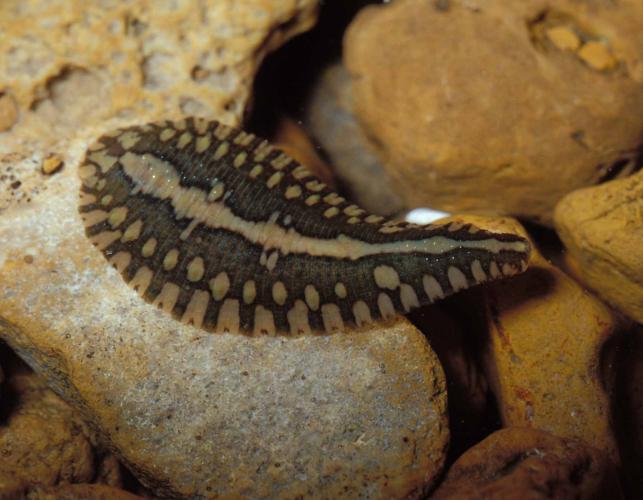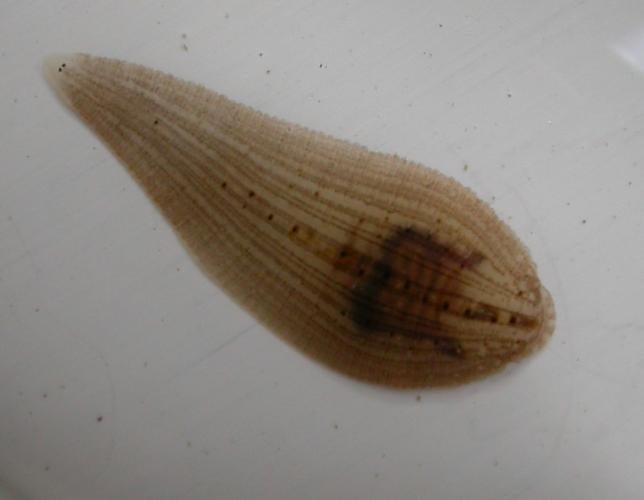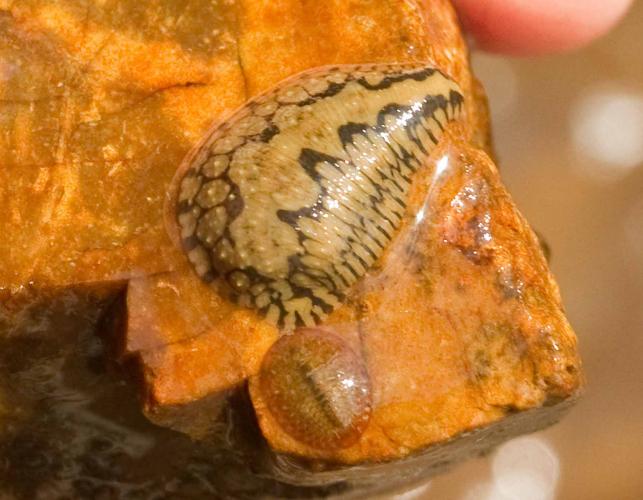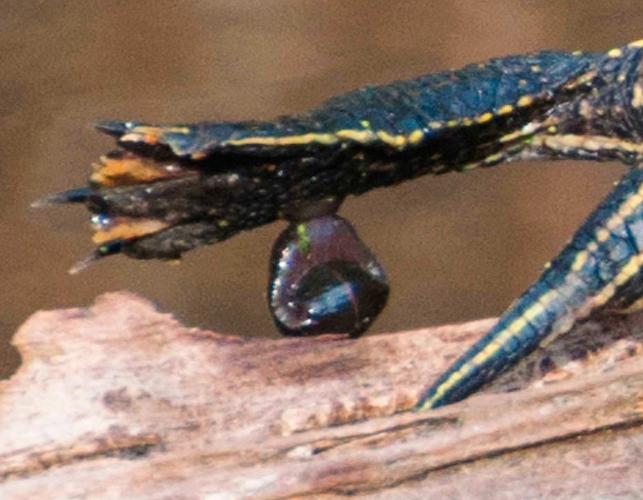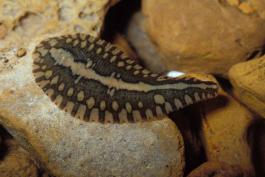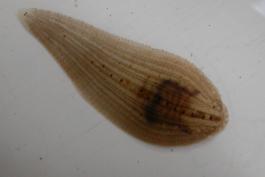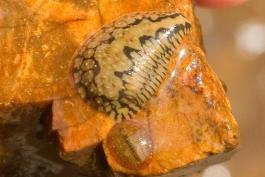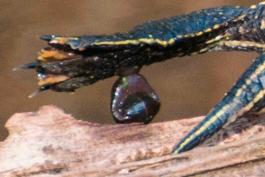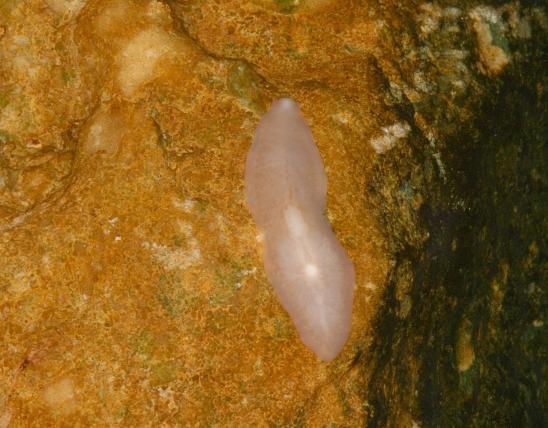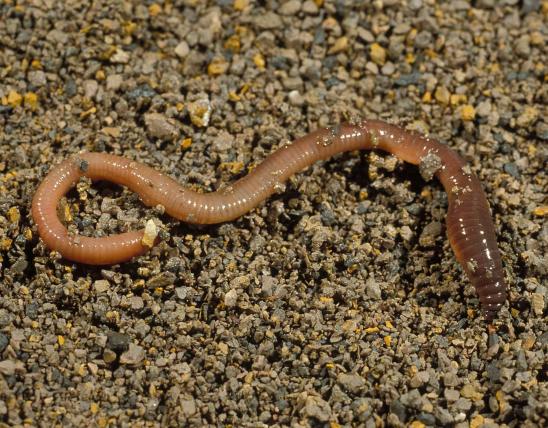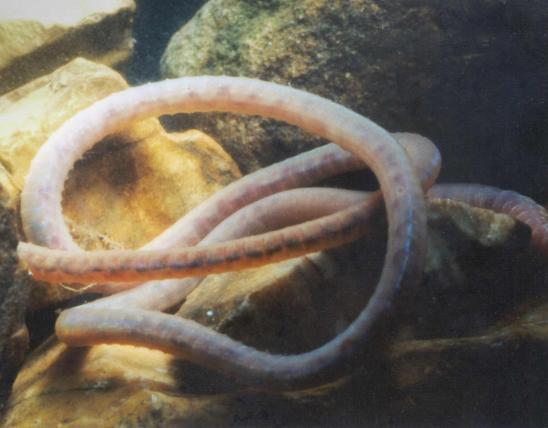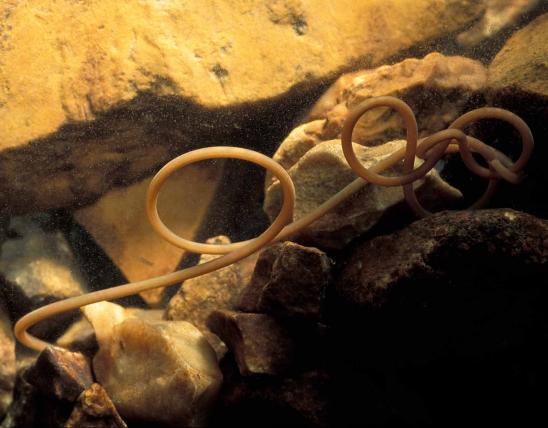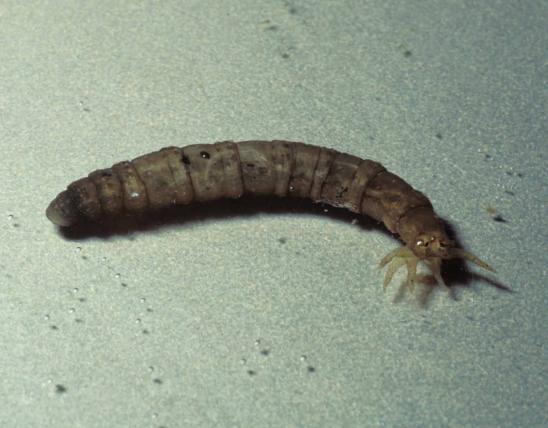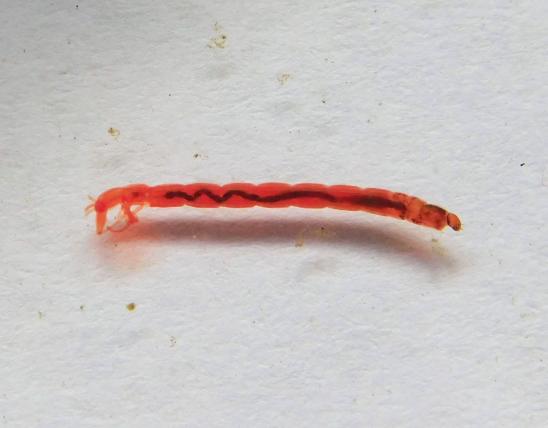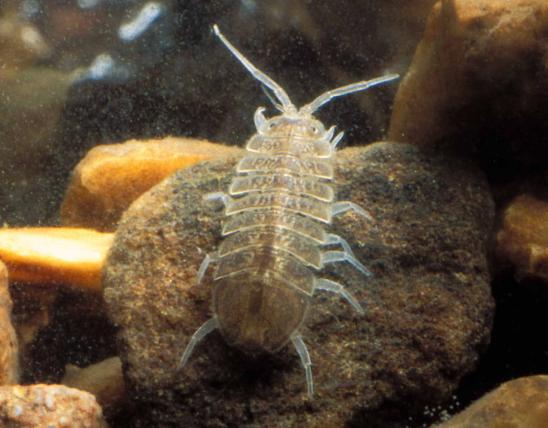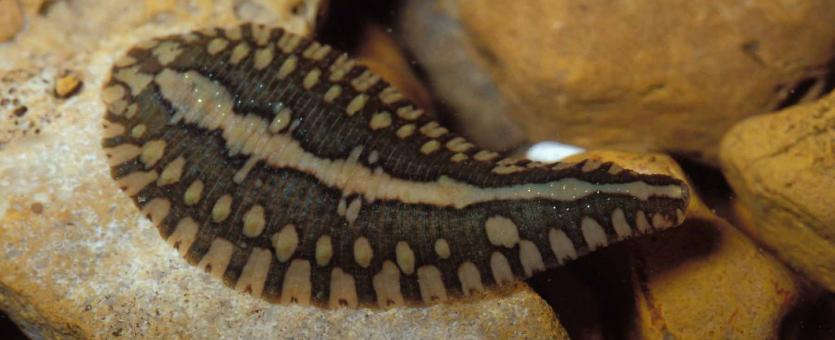
Leeches are segmented worms with flattened bodies. They are usually black or brown, although some species are brightly colored. Many leeches have attractive speckled or striped patterns. They are amazingly flexible, able to expand and contract to the point where it’s difficult to measure them. Each body segment is subdivided into annuli, which resemble wrinkles and add to the creature’s flexibility. There is a sucker at each end of the elongated body, and the suckers are often used for locomotion: Leeches can move by “looping” like an inchworm. The head of a leech holds the mouth sucker, which is usually at the more tapered (narrower) end. About a quarter of the way down from the head is the clitellum, which becomes more noticeable during times of reproduction (earthworms have this same swollen-looking structure, used in reproduction).
Length: usually ½ to 2½ inches, although some U.S. species can grow to 10 or even 20 inches.

Statewide.
Habitat and Conservation
Leeches are most abundant in warm, calm, shallow waters of ponds and lakes, especially in areas choked with vegetation and various debris. They usually avoid light. Some species hide under stones or under submerged logs; others live in the bottom muck; others “loop” among plants in gently moving waters of streams. Not all leeches are bloodsuckers. All native leeches have a place in our aquatic ecosystems.
Food
Many leeches are predatory, surprising small aquatic animals and eating them whole. But many species are parasites, equipped with jaws and muscles that enable them to adhere to the bodies of their hosts and consume blood. Different leech species specialize in different hosts, including mammals, reptiles, amphibians, fish, and snails. They usually secrete an enzyme that prevents the host’s blood from clotting, as well as an anesthetic, which prevents the host from noticing the leech’s attachment.
Life Cycle
Leeches, like their relatives the earthworms, are hermaphrodites, which means that each leech is both male and female: A mating pair of leeches fertilize each other, and both individuals produce eggs as a result. Also like earthworms, the clitellum structure secretes a ringlike mucous cocoon to protect the eggs.
Human Connections
Our English word leech is closely related to an ancient German word for "physician." For centuries, doctors treated various ailments by reducing the volume of blood in the patient’s body, and one way to do this was by attaching leeches, which gently removed that blood. Today, surgeons use the anticoagulants of leeches to keep blood flowing in reattached body parts. And the noun leech has also come to mean anyone or anything that hangs onto another for advantage, the way an external parasite does.
Ecosystem Connections
Many people are repulsed by soft-bodied bloodsuckers, but parasitism is an ancient way of life for many animals on Earth, and there is much to say for it. Parasites, unlike predators, generally do not kill their hosts, allowing them to live another day.
Leeches are eaten by many aquatic animals, such as fish.
Predatory leeches help to limit the populations of the small animals they consume.
